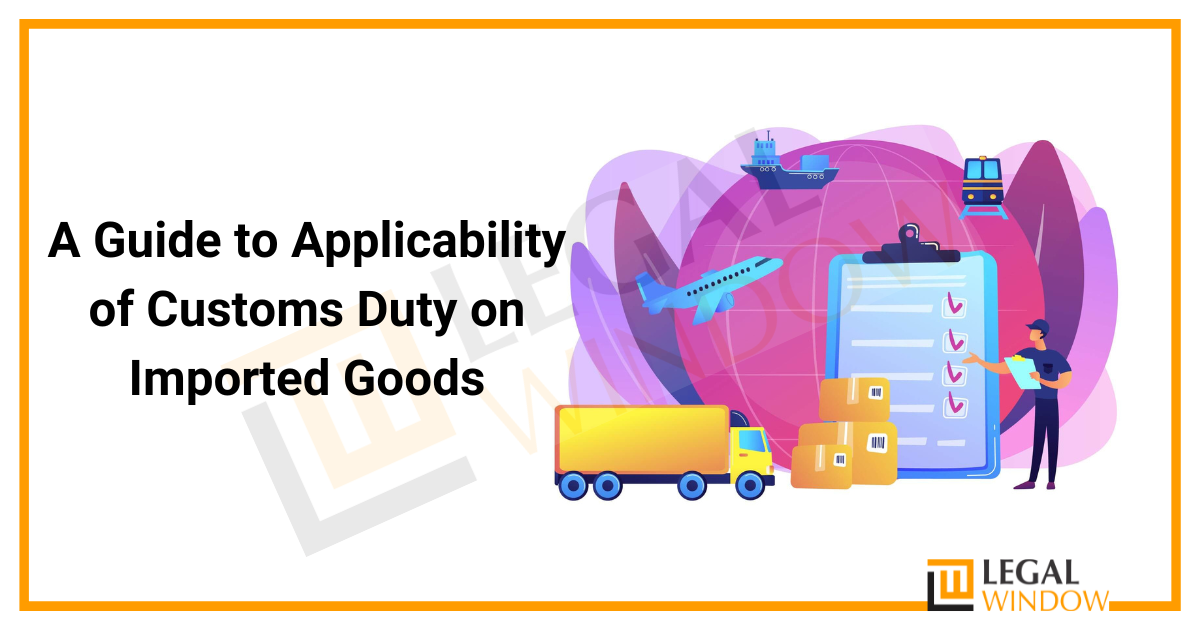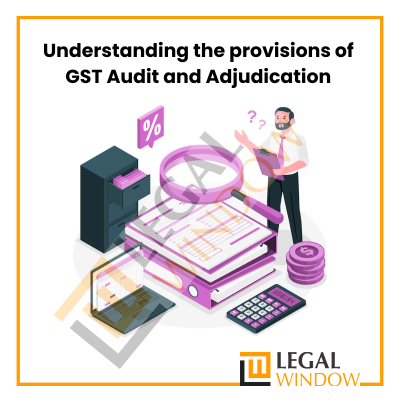A Guide to Applicability of Customs Duty on Imported Goods
- August 22, 2022
- Miscellaneous
 The Government of India levies duty on all imports within the country and some exports from the country. The amount to be paid as duty may be determined by several factors such as the value, weight, dimensions, etc. of the item concerned. So, this article will discuss the applicability of Customs Duty on Imported Goods under Section 12 of the Customs Act 1962.
The Government of India levies duty on all imports within the country and some exports from the country. The amount to be paid as duty may be determined by several factors such as the value, weight, dimensions, etc. of the item concerned. So, this article will discuss the applicability of Customs Duty on Imported Goods under Section 12 of the Customs Act 1962.
| Table of Contents |
Meaning of Custom duty
Firstly it is important to understand what custom duty is. Customs duty is a variant of indirect tax and applies to all goods imported and some goods exported from the country. Duties levied on the import of goods are called import duties, while duties levied on exported goods are called export duties. Countries around the world impose tariffs on the import/export of goods as a means of raising revenue and/or protecting domestic institutions from predatory or efficient competitors from other countries.
Duty is levied according to the value of the goods or the dimensions, weight, and other similar criteria according to the goods. If the duties are based on the value of the goods, then they are called ad valorem duties, while the duties based on quantity/weight are called specific duties.
Kinds of Custom Duty
Duties are levied on all goods imported into the country everywhere. Export duties are levied on several types of goods as specified in the Second Schedule. Import duties are not imposed on several items, including life-saving drugs/equipment, fertilizers, food grains, etc. Import duties are further divided into basic duty, additional duty, actual countervailing duty, safeguard duty, educational cess, and anti-dumping duty or safeguard duty. Let us now have a quick look at the types of customs duty.
- Basic Customs Duty: Basic duty applies to imported items falling within the purview of section 12 of the Customs Act, 1962. These duties are levied at the rates prescribed in the Customs Tariff Act, 1975 subject to the conditions set out in Section 2 of the Act. The selected rates can be standard or preferential depending on the country of import.
- Additional or Countervailing Duty: This duty is levied on imported items under Section 3 of the Tariff Act, 1975. It is equal to the central excise duty levied on similar goods manufactured in India. This duty is calculated on the total value of the goods including BDC and landing charges.
- Protective Duty: This duty may be imposed to protect the domestic industry against imports at a rate recommended by the Commissioner of Customs.
- Education Cess: This duty is levied at the rate of 2% and higher education tax at the rate of another 1% of the total duties.
- Anti-dumping duty: An anti-dumping duty can be imposed if the imported goods are below the fair market price and are limited to the difference between the export price and the normal price (dumping margin).
- Safeguard Duty: A safeguard duty is levied if the government believes that a sudden increase in exports has the potential to harm the domestic industry.
What is Section 12 of the Customs Act, 1962?
According to Section 12 of the Customs Act, 1962, duties will be levied at the rates specified in the Customs Tariff Act, 1975 on goods imported into or exported from India. When goods are imported into India, they become imported goods from the moment they enter the territorial waters, duty starts to be levied on them. At this point, the taxable supply is taken into account.
It needs to be determined whether or not they are duty-free on that date. If they are exempt from duty, there is no question of calculating the duty payable at any later time. If they are subject to any tax and not entirely exempt, the only question that arises is what duty is payable.
If the goods are fully exempt from duty as opposed to partially exempt from that duty, they cannot be subject to duty even if the exemption is withdrawn or changed before the bill of entry is presented or the goods are cleared for domestic consumption.
Applicability of Customs Duty on Imported Goods
Section 12 states that all goods imported into India shall be subject to duty. Imported goods must be valued following Section 14 of the Customs Act and the duty payable must be determined at the rates specified in Section 15 of the Customs Act of 1962 as amended by the Customs Act. According to Section 46(1) of the Customs Act, every importer of goods is obliged to register for domestic consumption or storage on the prescribed form. Goods can only be unloaded at an approved location and under the supervision of a customs officer under Section 31 of the Customs Act 1962.
According to section 12 of the Customs Act, an import into India which includes its territorial waters must mean that to incur tax under section 12, the taxable supply takes place when the goods enter the territorial waters. Import duty would be applicable if the goods enter the territorial waters of India and the goods can be valued and duty assessed and collected later as provided under Section 14 and Section 15 of the Customs Act. The rate itself may be determined later.
Custom duty update in the 2021 Union budget
Finance Minister Nirmala Sitharaman recently announced the Union Budget 2021 on February 1, 2021. In the latest budget speech, the Finance Minister announced several changes related to customs. The following suggestions were made:
- Removal of outdated exemptions through rationalization of customs structure.
- A reduction in duty on precious metals such as gold and silver. The rate has been reduced to 7.5% from the current rate of 12.5% for both metals.
Levy of Custom Duty
Every tax structure has four stages, i.e. levy, assessment, collection, and deferral. Assessment of the tax is specified in section 12 of the Customs Act. It identifies the person or immovable property on which a tax or duty is to be levied or charged. Liability for the duty payment is calculated and the last stage is the duty collection, which can be delayed for administrative convenience.
Under Section 12, duty is levied on goods imported into or exported from India at rates specified under the Customs Tariff Act 1975 or other laws. Based on the analysis of Section 12, we derive the following points:
- Duty is levied on goods when such goods are imported into or exported from India;
- The levy is subject to other provisions of this Act or another Act;
- The rates of basic duty are fixed under the Tariff Act, 1975 or any other law;
- Even goods belonging to the Government are liable to tax, though they may be exempt from tax notification according to section 25.
 Final words
Final words
The liability to pay duty begins as soon as the goods enter the territorial waters of India. No duty is levied on goods in transit on the same ship or if the goods are in transit from one ship to another. There is no duty on sample goods. The term territorial water is sometimes used informally to refer to any body of water over which a sovereign state has jurisdiction. Through baseline, the maritime boundaries and areas are calculated. Hope this guide to the applicability of customs duty on imported goods has given you what is all required.
CA Pulkit Goyal, is a fellow member of the Institute of Chartered Accountants of India (ICAI) having 10 years of experience in the profession of Chartered Accountancy and thorough understanding of the corporate as well as non-corporate entities taxation system. His core area of practice is foreign company taxation which has given him an edge in analytical thinking & executing assignments with a unique perspective. He has worked as a consultant with professionally managed corporates. He has experience of writing in different areas and keep at pace with the latest changes and analyze the different implications of various provisions of the act.
Categories
- Agreement Drafting (23)
- Annual Compliance (11)
- Change in Business (36)
- Company Law (148)
- Compliance (89)
- Digital Banking (3)
- Drug License (3)
- FEMA (17)
- Finance Company (42)
- Foreign Taxation (6)
- FSSAI License/Registration (14)
- GST (118)
- Hallmark Registration (1)
- Income Tax (199)
- Latest News (34)
- Miscellaneous (164)
- NBFC Registration (8)
- NGO (14)
- SEBI Registration (6)
- Section 8 Company (7)
- Start and manage a business (21)
- Startup/ Registration (127)
- Trademark Registration/IPR (40)
Recent Posts
- Master Secretarial Audit: A Complete Compliance Guide April 27, 2024
- Farmer Producer Companies-Major provisions under Companies Act April 26, 2024
- Detailed Analysis of Section 179 of the Companies Act, 2013 April 24, 2024
About us
LegalWindow.in is a professional technology driven platform of multidisciplined experts like CA/CS/Lawyers spanning with an aim to provide concrete solution to individuals, start-ups and other business organisation by maximising their growth at an affordable cost.







